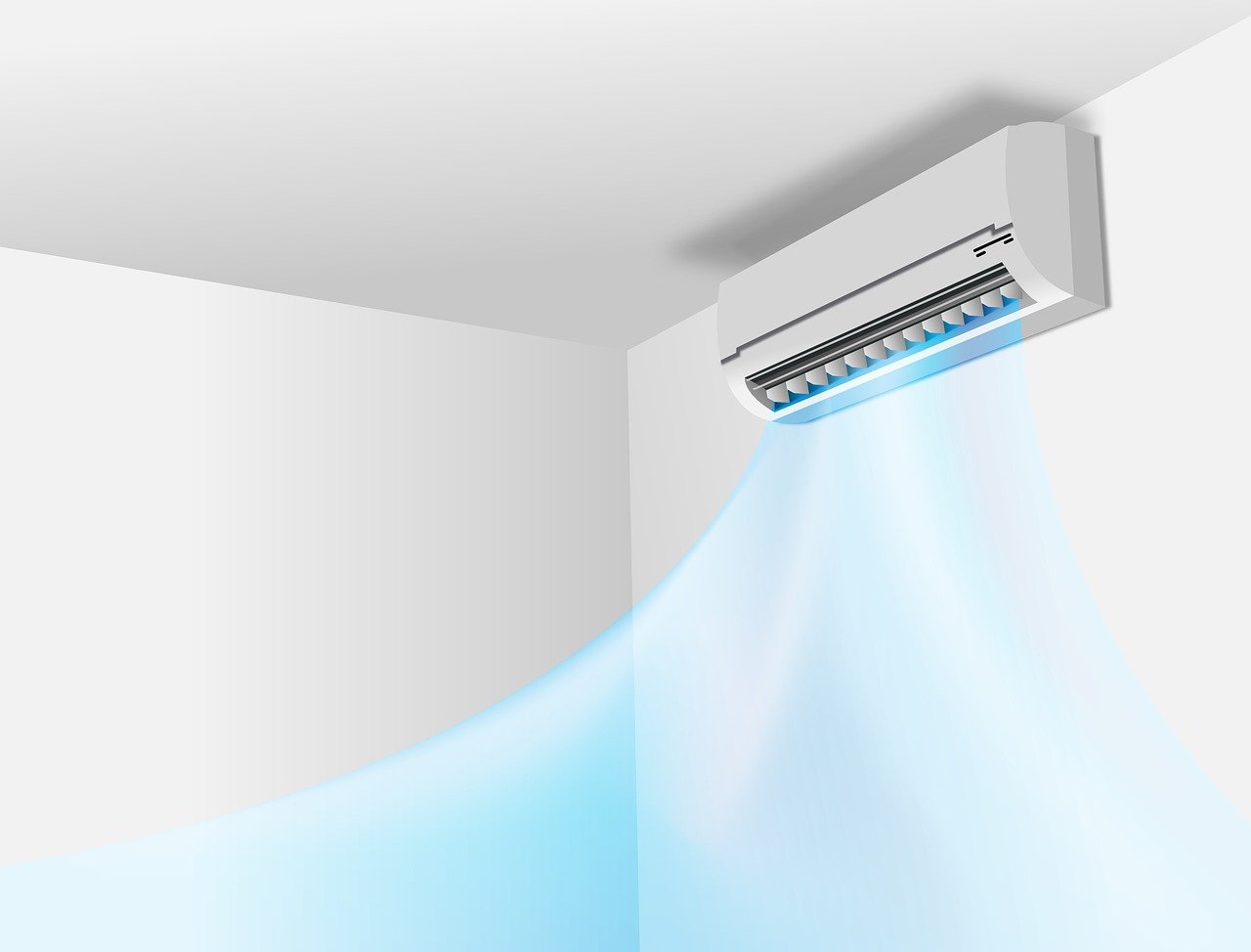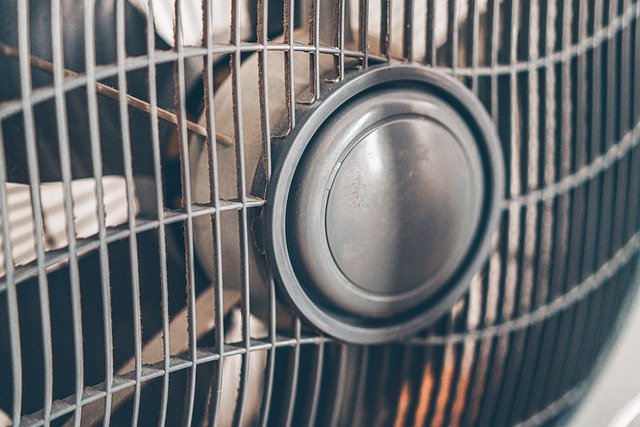[China: World Residence Tour] Housing in southern China troubled by humidity
- Release date: Jun 28, 2022
- Update date: Sep 10, 2025
- 8641 Views
Every year, the rainy season brings its troubles. Many people likely think things like “the rain never stops,” “nothing dries no matter what you hang out,” and “the dampness makes even your mood stay gloomy.” In fact, some regions in China also experience high humidity and share similar concerns. This time, using Shanghai and Chengdu as examples—cities facing similar challenges to Japan—we'll introduce the problems plaguing homes in southern China. We'll combine data from Global Market Surfer with household information registered in Consumer Life Panorama.
Climate of Shanghai and Chengdu
Like Tokyo, China's Jiangnan region, represented by Shanghai, also experiences a rainy season every year as a matter of course. It generally begins around June and lasts for nearly a month. The characteristics of Shanghai's rainy season are largely similar to Tokyo's, but if one point must be mentioned, it is the higher humidity compared to Tokyo.
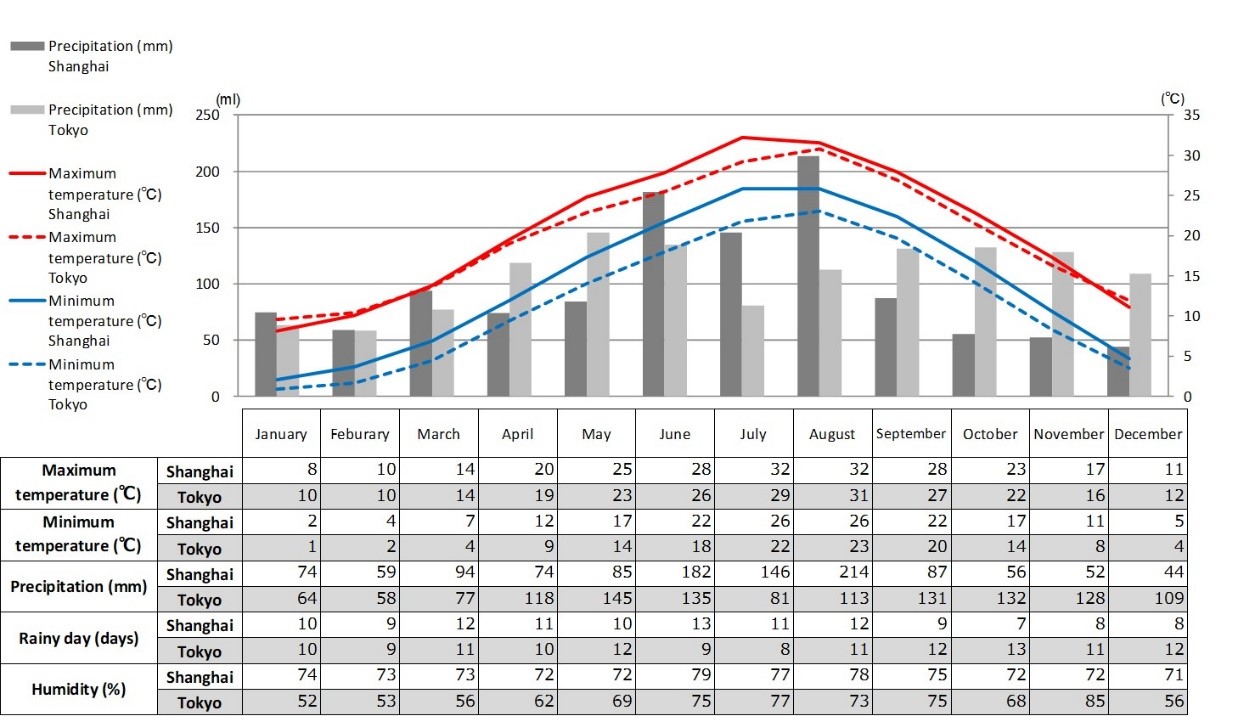
Highest and Lowest Temperatures, Precipitation, Number of Rainy Days, and Humidity in Shanghai and Tokyo
Source:Global Market Surfer
In Tokyo, humidity typically exceeds 70% from June to September, while it hovers around 50% to 60% during other months. In Shanghai, June humidity is higher than other months, but overall, every month exceeds 70%, making it more humid than Tokyo.
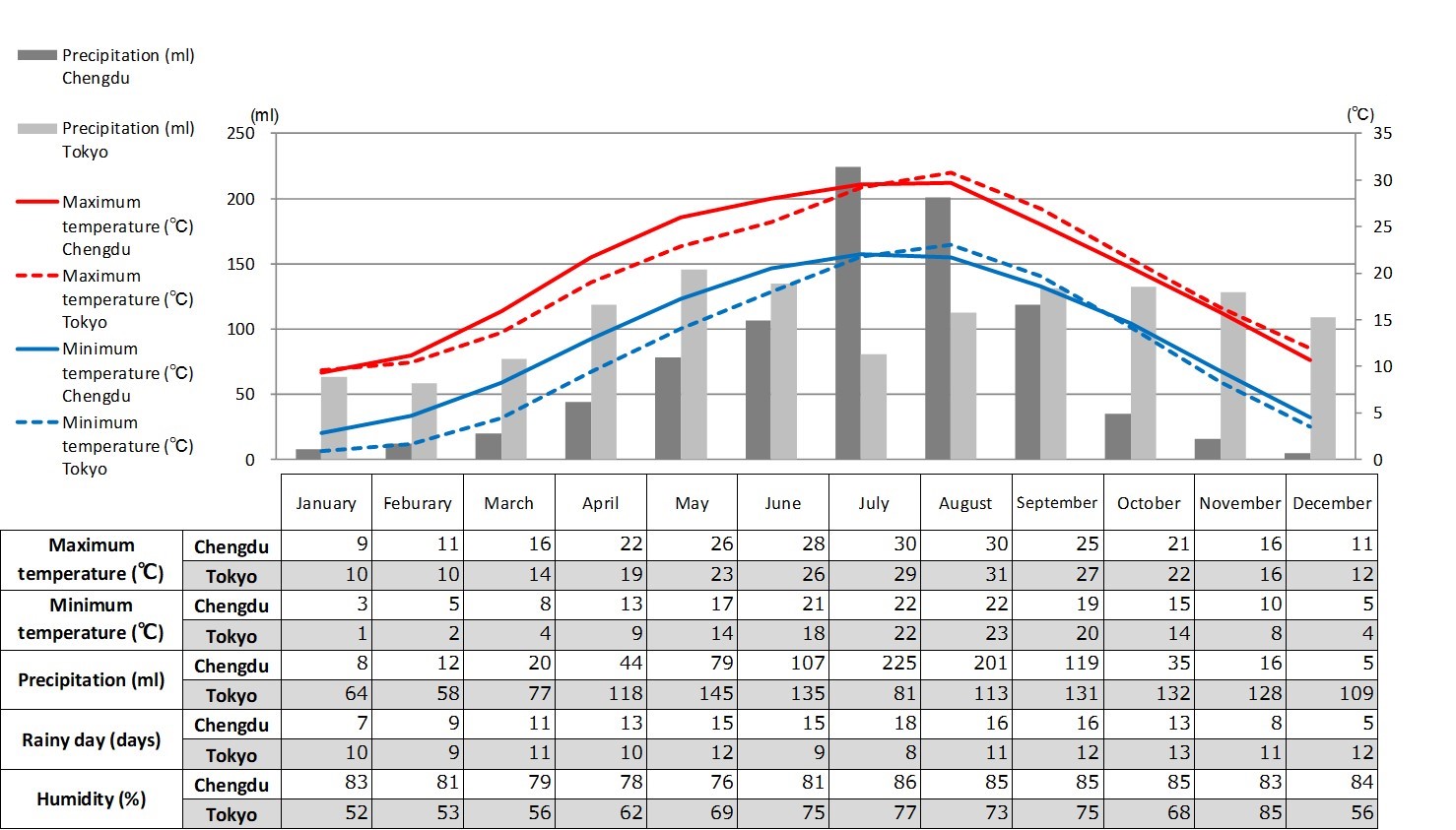
Highest and Lowest Temperatures, Precipitation, Number of Rainy Days, and Humidity in Chengdu and Tokyo
Source:Global Market Surfer
On the other hand, Chengdu, the provincial capital of Sichuan, is located inland in southwestern China and therefore has no rainy season. Yet when you look at the humidity, it hovers around 80% year-round—nearly 10% higher than Shanghai, let alone Tokyo. This is because Chengdu sits right in the middle of the Sichuan Basin, surrounded by mountains. Since moisture is heavier than dry air, it tends to pool in the basin. In fact, I myself was born in the Jiangnan region and have lived in both Shanghai and Chengdu for four years each, experiencing the discomfort of high humidity days.
The Trouble with High Humidity
For residents, regarding the troubles caused by high humidity, this time we will mainly explain moisture control in wet areas and clothes drying.
The bathroom poses particular challenges when it comes to moisture control in wet areas. People in southern China shower more frequently than those in the north, with many showering daily. However, when humid days persist, moisture accumulates and mold easily grows. Unlike Japanese bathrooms, Chinese bathrooms often feature showers, sinks, and toilets in the same space, frequently without even partitions. The image below shows a bathroom in a Chengdu home. As you can see, every time someone showers, the sink, toilet, and everything stored inside get completely soaked.
Furthermore, while shower rooms in Japan often have ventilation fans installed, many homes in China still lack them. Therefore, bathrooms should ideally have windows to allow for air exchange with the outside. However, ventilation through windows has its limitations, and especially during prolonged rainy periods, it can be a real problem that things just don't dry properly.
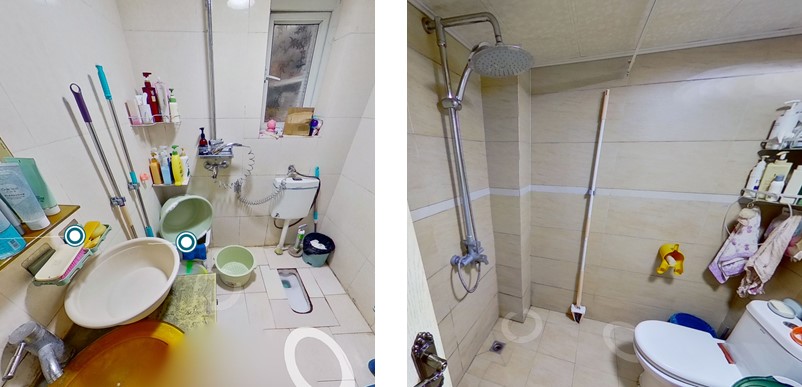
Chengdu bathrooms with shower, sink, and toilet in the same space (Left: CN_82, Right: CN_84)
(Source: Consumer Life Panorama)
What is Consumer Life Panorama?
This is a website-type database that has accumulated visual data on more than 1,000 sei-katsu-sha from 18 countries around the world. The database includes many 3D models of living environments and 2D data of items owned by each sei-katsu-sha, and is useful for understanding overseas sei-katsu-sha, which is difficult to grasp using only letters and numbers.
Using visual data such as those cited in this column,
Compare the differences in the attributes of overseas consumers
To get a realistic understanding of the actual usage of each category
To understand the overall lifestyle of target consumers
etc., can be utilized as a “no-go” home visit survey.
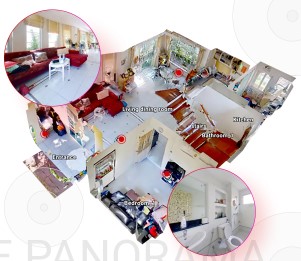
Furthermore, this type of bathroom layout presents another challenge: installing appliances. In bathrooms without a solid partition for the shower area, outlets cannot be placed lower down.
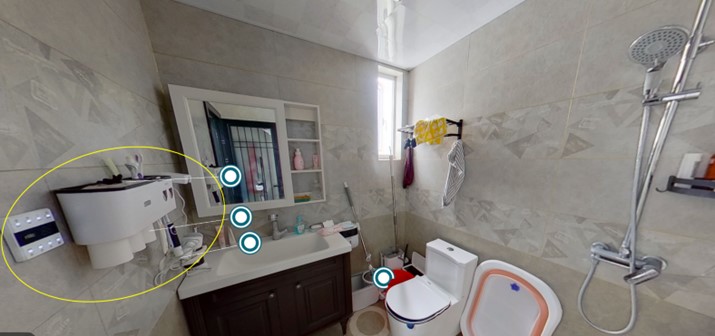
A Chengdu bathroom (CN_74) with an outlet installed far from the shower and high on the wall
(Source: Consumer Life Panorama)
Before COVID, the Washlet was often cited as a prime example of Japanese home appliances frequently bought in bulk by Chinese tourists. However, it's not something that can be installed in every household. There are economic reasons, but also structural reasons related to bathroom layouts. Consequently, in more forward-thinking households, even if it means making the bathroom smaller, there's a trend toward installing proper partitions to separate wet and dry areas.
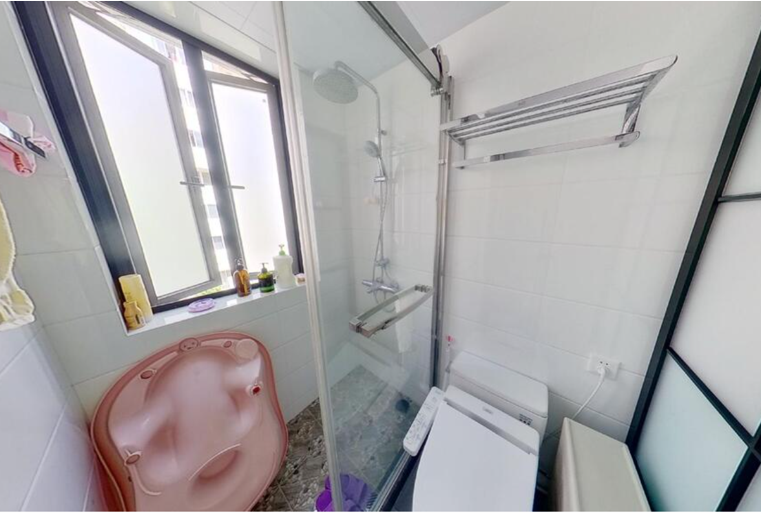
Shanghai households installing bidets after thoroughly separating wet and dry areas (CN_32)
(Source: Consumer Life Panorama)
Another challenge is drying laundry. Unlike Japanese homes, Chinese households typically don't have bathroom dryers installed. In such cases, drying areas are chosen for maximum sunlight and airflow. Even so, humidity levels in these drying spots tend to remain relatively high.
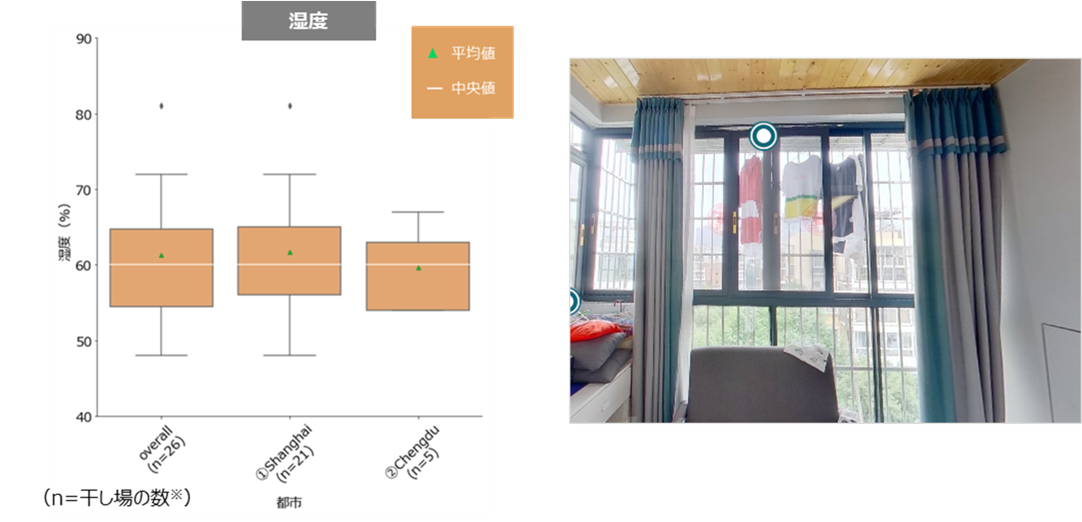
Average and median humidity levels at drying sites, typical outdoor drying site (CN_74)
(Source: Consumer Life Panorama)
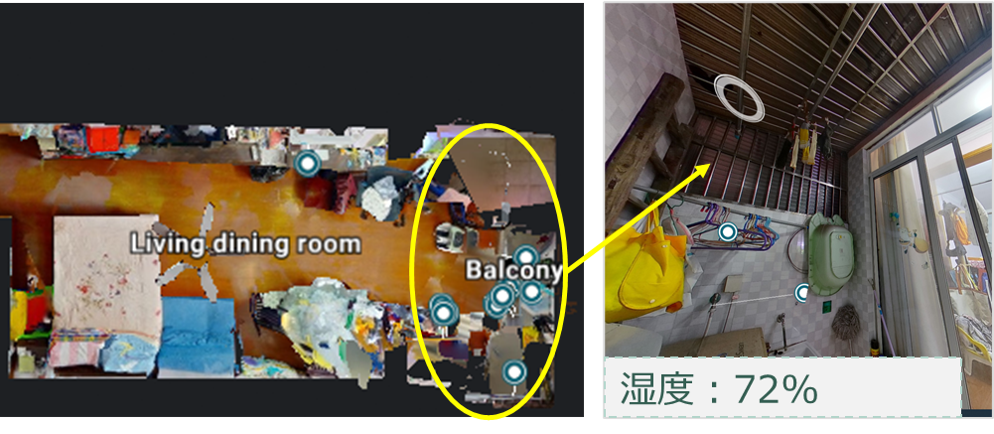
Indoor drying area with 72% humidity (CN_50) (Source: Consumer Life Panorama)
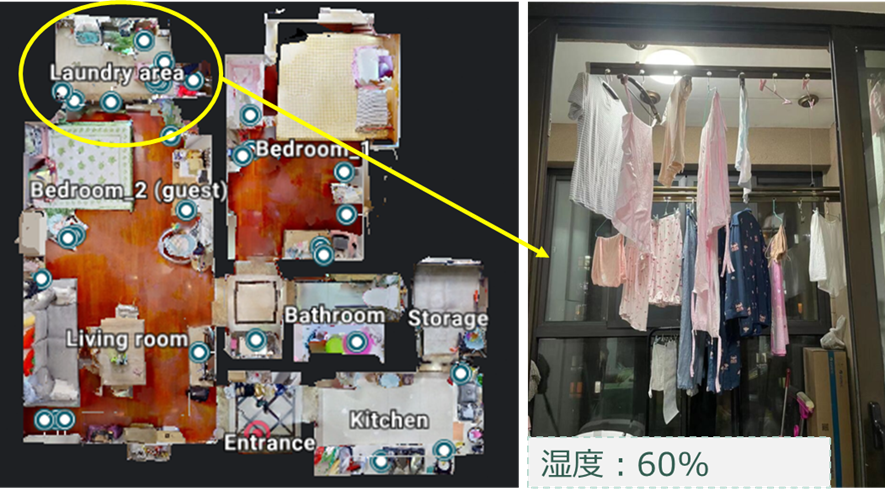
Indoor drying area with humidity at 60% (CN_62)
(Source: Consumer Life Panorama)
Looking around the world, Japanese bathrooms are remarkably ingeniously designed. It's not just about separating the shower space, sink area, and toilet into distinct zones; there are numerous thoughtful touches that surprise those accustomed to living abroad. These include the placement of outlets in each space, the selection and installation of appliances, and the rationalization of movement patterns. While this is commonplace for Japanese residents, it significantly enhances the happiness and convenience of daily life for those from other countries. For Japanese manufacturers to effectively convey this Japanese ingenuity to consumers, the first step is to thoroughly understand the specific concerns and challenges they face.
-

Author profile
Yang Yan
A Chinese researcher based in Japan, primarily reporting on overseas consumer lifestyles with a focus on China. While living in Chengdu, I got used to hanging clothes on the balcony—they'd always dry about 80% of the way.
-

Editor profile
Yusuke Tatsuda
Responsible for building the Global Market Surfer website. Dislikes seasons with high humidity.
 Global Market Surfer
Global Market Surfer CLP
CLP
